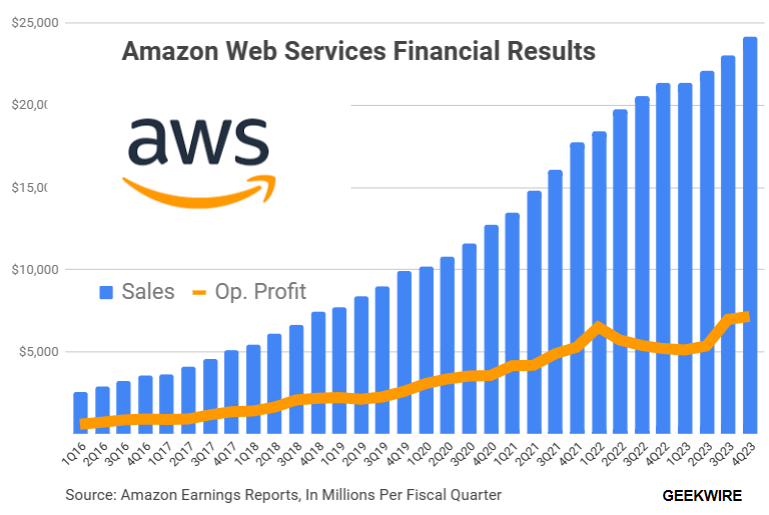
Amazon Web Services will cut several hundred jobs in its Sales, Marketing, and Global Services organization, and a few hundred jobs on its Physical Stores Technology team, executives in the tech giant’s cloud computing division informed employees Wednesday morning in internal emails.
In the Sales, Marketing, and Global Services organization, most of the cuts are in training and certification, and sales operations. The company said it’s shifting its focus to self-serve digital training and training programs run by external partners.
AWS also cited overlap in some program management and sales operations roles.
“We do not take these decisions lightly, and I know change can be difficult,” wrote Matt Garman, AWS senior vice president. “We operate in an incredibly fast-moving industry, and it is important that we stay agile as an organization.”
He added, “The changes we are making are preparing the organization for the future, aligning with our strategy and priorities, and reducing duplication and inefficiency. I recognize the effect this has on every individual impacted.”
For the AWS team that develops technology for Amazon’s physical retail stores, the cuts follow reports Tuesday that Amazon is shifting away from its “Just Walk Out” technology in its larger Amazon Fresh grocery stores.
The layoffs will impact a portion of the AWS identity and checkout teams within the Physical Stores Technology organization, wrote Dilip Kumar, vice president of AWS applications, in a separate message to employees.
“We’ve learned a lot through the launch of identity and checkout technologies in our large format Amazon Fresh stores, and have good customer feedback to inform our plans going forward,” Kumar wrote. “We are also expanding our identity and checkout technologies in smaller-format 1P [first-party] stores, and growing our third-party locations.”
AWS said it will continue to hire and grow in other parts of its business. The cloud giant currently has thousands of open jobs, and says it’s working to find internal opportunities for employees whose roles are being eliminated.
In a statement, a spokesperson said AWS “identified a few targeted areas of the organization we need to streamline in order to continue focusing our efforts on the key strategic areas that we believe will deliver maximum impact.”
The company is “committed to supporting the employees throughout their transition to new roles in and outside of Amazon,” the spokesperson said, adding that the decisions “are difficult but necessary as we continue to invest, hire, and optimize resources to deliver innovation for our customers.”
The job cuts are expected to take place in regions around the world, although the heavy concentration of AWS roles in Amazon’s hometown means that the decision is likely to have a disproportionate impact on the company’s Seattle workforce.
Employees in the U.S. will receive pay and benefits for at least 60 days, outplacement job search support, and access to transitional health benefits, the company said. They will also be eligible for a severance payments.

Many large tech companies have been making job cuts periodically for more than a year, starting in late 2022 and early 2023, seeking to focus their businesses and reduce operating costs. AWS was among the Amazon divisions impacted by the company’s overall reduction of 27,000 jobs in two major waves of layoffs last year.
After experiencing a decline in profitability from mid-2022 to mid-2023, AWS rebounded with 29% and 38% increases in year-over-year operating profits in the third and fourth quarters of 2023, respectively.
AWS reported profits of $7.2 billion on revenue of $24.2 billion in the fourth quarter, contributing significantly to Amazon’s overall business growth.
Amazon’s market share among cloud infrastructure providers dipped to 31% in the fourth quarter, according to Synergy Research Group, despite double-digit revenue growth rates. Microsoft Azure and Google Cloud both grew at a faster clip, and boosted their overall market share to 24% and 11%, respectively.
Demand for AI services is boosting cloud spending overall by large companies, with total enterprise spending on cloud infrastructure services approaching $74 billion in the quarter, up $12 billion or 20%, according to the research firm.

